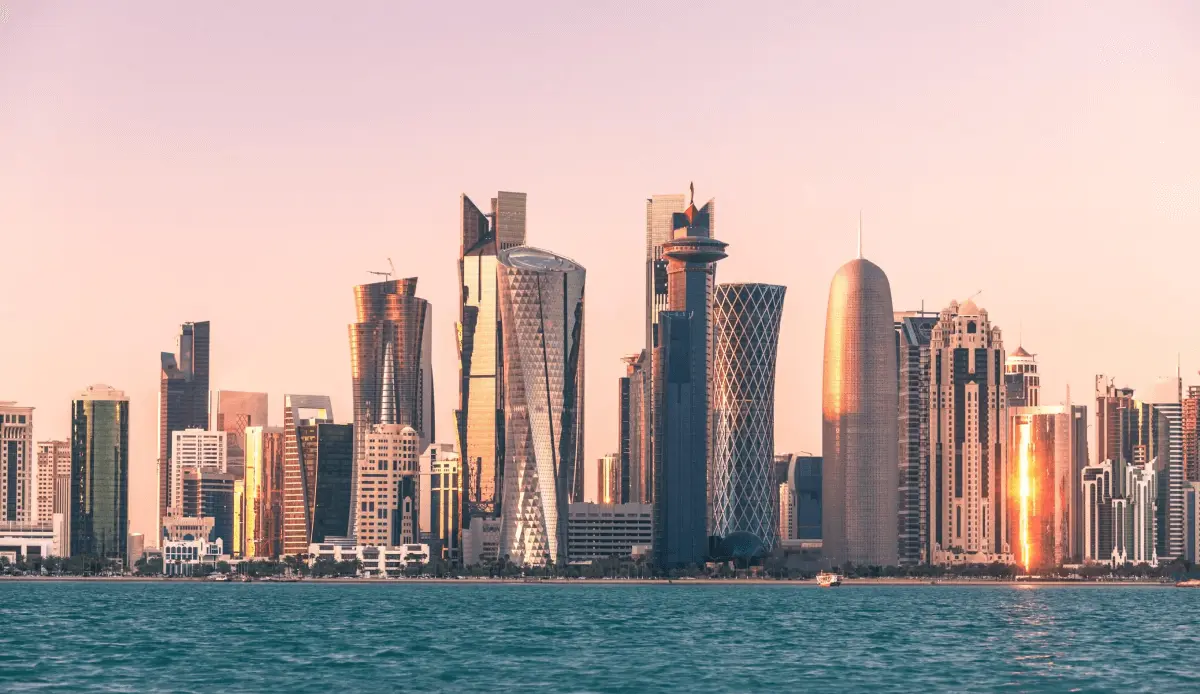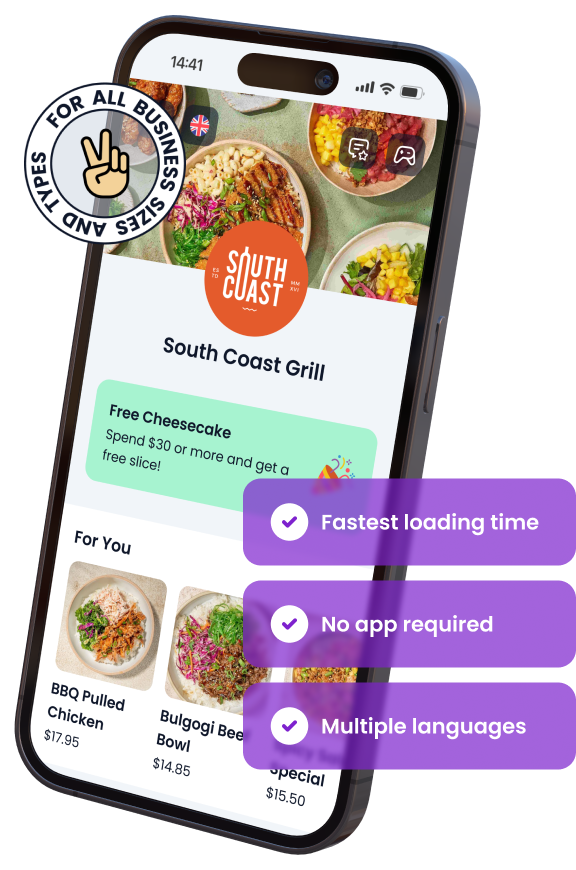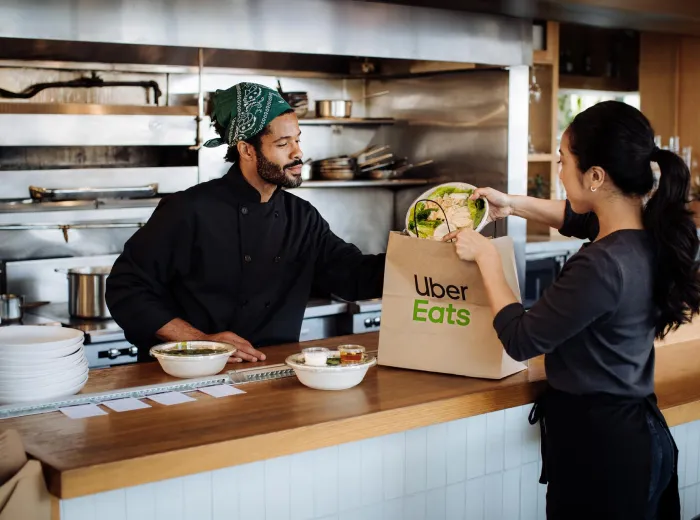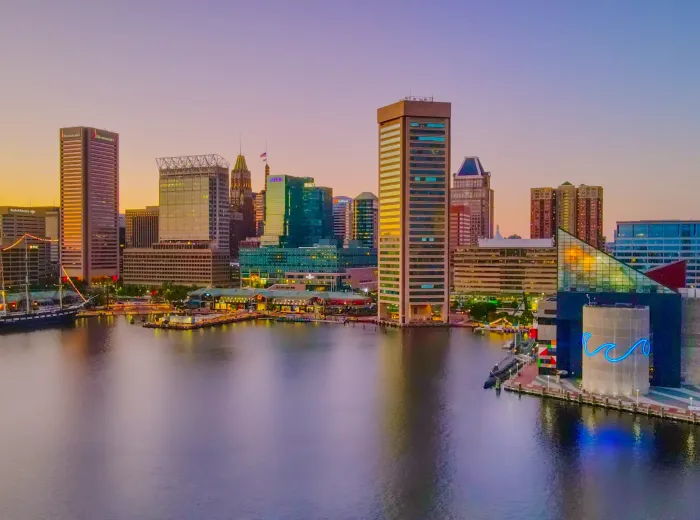

How Much Does It Cost to Open a Restaurant in Doha in 2025?
Opening a restaurant in Doha, Qatar, in 2025 presents a unique set of opportunities and challenges. With its growing economy and international appeal, Doha has become a vibrant hub for culinary entrepreneurs. However, the financial aspects of opening a restaurant in this dynamic city can be complex and influenced by various factors.
Whether you’re planning a small café or a fine-dining establishment, understanding the cost structure is critical. Key factors such as location, licensing, staffing, and marketing can dramatically affect your initial investment and ongoing expenses. As Qatar continues to invest in its tourism and hospitality sector, the competition is rising, making it essential for aspiring restaurateurs to budget wisely and anticipate the full range of costs.
In this guide, we will break down the major expenses you’ll encounter when starting a restaurant in Doha. From real estate and design costs to staffing, marketing, and hidden fees, we will provide a detailed analysis to help you plan and budget for success in 2025.
Would you like to listen our deep-dive conversation about this article?
The Financial Landscape of Opening a Restaurant in Doha
Opening a restaurant in Doha in 2025 offers significant potential, but it also comes with considerable financial commitments. Understanding the economic environment, key cost drivers, and overall market trends will give you an edge when planning your budget. Doha’s growth as a culinary destination makes it both exciting and competitive, with financial planning becoming more important than ever.
Overview of Qatar’s Restaurant Industry in 2025
The restaurant industry in Qatar has experienced rapid growth over the past decade, driven by increased tourism, an expanding expatriate population, and strong local demand for diverse dining options. Here’s an overview of key elements affecting the industry in 2025:
- Growing demand for international cuisines: Doha’s population and tourists alike seek unique, global culinary experiences.
- High disposable income: Many residents have significant spending power, allowing for premium dining options to flourish.
- Government support for entrepreneurship: Qatar offers various initiatives to support new businesses, including restaurants.
- Event-driven demand: Large-scale events like the 2022 FIFA World Cup continue to boost demand for restaurants.
| Factor | Impact on Industry |
|---|---|
| Expanding population | Increased demand for diverse dining |
| High tourism numbers | Strong market for both casual and fine dining |
| Government incentives | Easier access to funding and resources |
| Competitive market | Need for innovation and differentiation |
Key Factors Impacting Restaurant Costs in Doha
The cost of opening a restaurant in Doha is shaped by a variety of external factors. From the type of cuisine you plan to offer to your target customer base, each decision influences your budget. Below are some of the key factors:
- Location: Prime areas like The Pearl or Lusail are expensive, while more suburban locations may offer lower rents but attract fewer customers.
- Concept and Design: Fine dining restaurants will require more investment in interiors and furniture compared to casual dining or fast-food outlets.
- Supplier and Equipment Costs: Importing specialized kitchen equipment or ingredients can significantly increase costs, particularly if you’re sourcing items internationally.
- Regulations and Licensing: Specific licenses (e.g., alcohol licenses) can add substantial fees to your budget.
| Factor | Estimated Impact on Budget |
|---|---|
| Prime location rent | 30% of initial setup costs |
| Licensing & permits | 5-10% of overall startup budget |
| Equipment & supplies | 20-25% of total investment |
How Doha's Growing Economy Affects Restaurant Startups
Qatar’s economy continues to grow, and this has a direct impact on the restaurant business. The wealth generated from natural resources and diversification efforts has resulted in increased disposable income, which translates into higher spending on dining and entertainment. However, economic growth also means rising costs for entrepreneurs, especially in terms of wages, rents, and utilities.
- Increased disposable income: More residents and tourists are willing to spend on dining experiences.
- Rising operational costs: As the economy grows, the cost of doing business in terms of rent and salaries is also rising.
- Competition for prime locations: As more restaurateurs enter the market, securing a prime location has become highly competitive, driving up real estate prices.
Understanding how these economic trends affect your restaurant’s financial outlook can help you adapt your business model to be profitable in a competitive market.
This financial landscape shows that while the potential for success is high, careful financial planning and budgeting are essential to navigating the challenges of opening a restaurant in Doha.
What Are the Major Costs to Open a Restaurant?
When planning to open a restaurant in Doha, it’s essential to consider the numerous expenses that go into the initial setup and ongoing operations. These costs can vary significantly depending on the type of restaurant, location, and concept. Below, we break down the major costs you’ll face, from rent and design to licenses and permits.
Location and Rent Costs in Doha
The location of your restaurant is one of the most critical factors in determining its success and the associated costs. Prime locations come with higher price tags but also offer greater foot traffic and visibility.
- Prime areas (e.g., The Pearl, West Bay): High-end, luxury locations ideal for fine dining but can cost 50,000-100,000 QAR per month in rent.
- Suburban or less central areas: More affordable, with rental costs ranging from 15,000-30,000 QAR per month but may require additional marketing efforts to draw customers.
- Mall locations: Higher traffic but also higher rent and additional fees, typically between 25,000-60,000 QAR per month.
Renovation and Interior Design Expenses
The aesthetic and functionality of your restaurant play a significant role in attracting customers, but they come at a cost. Renovation and interior design expenses will vary depending on the scale of your project and your restaurant’s theme.
- Concept-driven design: If you’re creating a high-end restaurant with custom furniture, unique design elements, and a premium ambiance, you should budget between 300,000-800,000 QAR.
- Basic setup for casual dining: A simpler layout with standard furniture and equipment may cost between 100,000-300,000 QAR.
- Kitchen equipment: Professional-grade equipment for a commercial kitchen can cost between 150,000-400,000 QAR depending on the size and requirements.
Licensing and Permits Costs in Doha
Securing the necessary licenses and permits is a critical part of opening a restaurant in Doha, and these fees can add up quickly. The specific licenses you need will depend on the type of establishment you are opening and whether you plan to serve alcohol.
- Food license: Required to operate any establishment that serves food, typically costing between 3,000-10,000 QAR.
- Health permits: Required for food safety compliance and usually cost around 2,000-5,000 QAR.
- Alcohol license: If you plan to serve alcohol, this license can cost between 50,000-150,000 QAR depending on the type of establishment.
- Municipality and commercial registration fees: Expect to spend between 10,000-25,000 QAR for various local business licenses.
Understanding these major costs is essential for building a realistic budget for your restaurant. Each element, from location to licensing, plays a key role in the success and sustainability of your venture in Doha.
How Much Do Staffing and Labor Cost in Doha?
Staffing is one of the most significant ongoing expenses for a restaurant in Doha. With labor laws, competitive wages, and the cost of hiring foreign workers, restaurant owners need to allocate a considerable portion of their budget to human resources. Below, we explore the costs associated with hiring, training, and retaining a team for your restaurant.
Hiring Chefs, Waitstaff, and Management in 2025
In 2025, staffing costs in Doha are influenced by a competitive job market, labor laws, and the reliance on expatriate workers. Below is an overview of typical salaries for key positions within a restaurant.
- Chefs: Highly skilled chefs, especially those with international experience, can command premium salaries. Executive chefs may earn between 15,000-25,000 QAR per month.
- Waitstaff: Salaries for waiters and waitresses typically range between 3,000-5,000 QAR per month. Service staff with specialized skills (e.g., baristas, sommeliers) may earn higher wages.
- Restaurant managers: Experienced restaurant managers can expect salaries in the range of 10,000-20,000 QAR per month, depending on the size and concept of the restaurant.
| Position | Monthly Salary (QAR) |
|---|---|
| Executive Chef | 15,000 – 25,000 |
| Sous Chef | 8,000 – 12,000 |
| Waitstaff | 3,000 – 5,000 |
| Restaurant Manager | 10,000 – 20,000 |
| Barista / Bartender | 4,000 – 6,000 |
Additionally, you must consider the cost of providing accommodation, health insurance, and transportation for foreign workers, as required by Qatari labor laws. These can add 15-20% to the total salary package.
Labor Regulations and Visa Costs for Foreign Workers
Many restaurant owners in Doha hire expatriates due to the city’s diverse workforce and the specific skill sets needed for certain roles. However, employing foreign workers comes with added costs related to visas and permits:
- Work visas: Each work visa typically costs around 1,000-2,500 QAR per employee. In addition, the employer is responsible for covering renewal fees and processing costs.
- Health insurance: Qatar mandates that employers provide health insurance for all employees. For restaurant staff, this can cost between 500-1,500 QAR per year per employee, depending on the coverage.
- Recruitment fees: Hiring foreign workers often involves recruitment agencies, which charge fees ranging from 2,000-5,000 QAR per hire, depending on the position and country of origin.
Training and Onboarding Costs
Training your staff to deliver consistent service and maintain high standards is critical for success, especially in the competitive restaurant market of Doha. Whether you’re hiring experienced professionals or entry-level staff, training involves both time and financial investment.
- Training programs: Specialized training, such as culinary skills or customer service, may require an investment of 5,000-10,000 QAR per employee for external courses or workshops.
- In-house training: Conducting in-house training sessions will require budgeting for materials, time, and possibly an external trainer. This can range from 2,000-6,000 QAR depending on the depth of the training.
- Onboarding costs: For each new hire, expect to spend 500-1,500 QAR for onboarding expenses like uniforms, materials, and administrative setup.
Retaining Talent in a Competitive Market
With a competitive labor market in Doha, retaining skilled staff is crucial to avoid high turnover costs. Strategies for retaining talent include offering competitive salaries, benefits, and a positive work environment.
- Performance-based incentives: Offering bonuses or profit-sharing options can help retain key employees. This can range from 5-10% of an employee’s annual salary.
- Professional development: Investing in your employees’ growth by offering training and development programs not only improves their skills but also increases loyalty.
By effectively managing labor costs and investing in the right talent, restaurant owners can create a team that not only provides excellent service but also contributes to the long-term success of the business.
Marketing and Branding Costs for a New Restaurant
Marketing and branding are crucial for any restaurant aiming to establish a strong presence and attract a steady flow of customers in Doha. In 2025, a well-rounded marketing strategy includes a mix of digital, traditional, and influencer-driven approaches, all of which come with associated costs. Building a unique brand identity also requires investment in logo design, website development, and menu creation. Below, we explore the key marketing and branding expenses involved in launching a new restaurant in Doha.
Traditional Marketing vs. Digital Marketing Costs
Both traditional and digital marketing approaches are important when promoting a new restaurant in Doha. Balancing these two strategies depends on your target audience and budget.
Traditional marketing: These methods are still highly effective in Doha, especially for local audiences. They include print advertisements, radio spots, and outdoor advertising such as billboards or flyers.
- Print advertising: Magazine or newspaper ads can cost between 2,000-10,000 QAR depending on the publication and size of the ad.
- Radio spots: Local radio advertisements can range from 3,000-7,000 QAR for a 30-second spot.
- Billboards and outdoor ads: Expect to pay between 10,000-25,000 QAR for a month-long campaign on prime locations.
Digital marketing: Digital platforms allow you to reach a wider and more targeted audience. Costs here are largely flexible and scalable based on your budget.
- Social media advertising: Platforms like Instagram, Facebook, and Google ads typically cost between 1,000-5,000 QAR per month for smaller campaigns, while more aggressive digital marketing can cost 10,000-20,000 QAR per month.
- SEO (Search Engine Optimization): An investment of 3,000-8,000 QAR per month in SEO can ensure that your restaurant appears prominently in local search results.
- Influencer marketing: In Doha, influencers play a key role in the dining scene. Collaborating with food bloggers and influencers can cost between 5,000-15,000 QAR per campaign, depending on their follower count and engagement.
Building a Brand: Logo, Website, and Menu Design
Creating a distinct brand identity for your restaurant is essential for long-term success. This includes designing a logo that reflects your concept, developing a professional website, and crafting a visually appealing menu.
- Logo design: Working with a professional branding agency or designer can cost between 5,000-15,000 QAR depending on the complexity of the design.
- Website development: A restaurant website needs to be user-friendly, mobile-responsive, and integrated with booking and delivery platforms. Costs can range from 8,000-20,000 QAR for a professionally developed website.
- Menu design: An attractive and easy-to-read menu enhances the dining experience. Expect to spend between 2,000-6,000 QAR for professional menu design, including printing costs.
Importance of Influencer Marketing in Qatar
In Doha, influencer marketing has become a powerful tool for promoting restaurants. Food bloggers, Instagram influencers, and YouTube personalities have a significant impact on where locals and tourists choose to dine.
- Micro-influencers (5k-20k followers): These influencers tend to have highly engaged audiences. Collaborating with them can cost between 2,000-5,000 QAR per campaign, making them a budget-friendly option for new restaurants.
- Macro-influencers (50k+ followers): For a larger reach, partnering with macro-influencers comes at a higher cost, ranging from 10,000-20,000 QAR per post or campaign, depending on their audience size.
Collaborating with influencers can help create buzz around your restaurant’s opening, attract a loyal customer base, and boost your social media presence. By combining both digital and traditional marketing strategies and investing in professional branding, you can set your restaurant up for long-term success in Doha’s competitive dining scene.
What Are the Hidden Costs of Opening a Restaurant in Doha?
When opening a restaurant in Doha, it’s easy to focus on the obvious expenses like rent, staff salaries, and marketing. However, hidden costs can quickly add up and put pressure on your budget if not accounted for. These costs are often overlooked by new restaurateurs but can significantly impact your overall profitability.
Utilities, Maintenance, and Overhead
Utility and maintenance costs are essential for the day-to-day operation of a restaurant but are often underestimated. These costs vary depending on the size of your restaurant, the type of equipment you use, and the seasonality of the business.
- Energy costs: Qatar’s hot climate means that air conditioning will be a significant expense. On average, electricity bills for a mid-sized restaurant range between 5,000-15,000 QAR per month, depending on energy consumption.
- Water and gas: Water is essential for kitchen operations, and gas is often used for cooking. Expect to pay 2,000-5,000 QAR per month for these utilities.
- Waste management: Restaurants must also budget for waste disposal, which typically costs between 500-1,500 QAR per month, depending on the volume of waste generated.
- Equipment maintenance: Kitchen equipment requires regular servicing to maintain efficiency. Set aside 2,000-5,000 QAR per month for routine maintenance and repairs.
Ongoing Maintenance for Equipment and Property
Beyond routine maintenance, your restaurant will face additional costs for unexpected breakdowns and general upkeep. While some of these expenses may not occur monthly, they can still affect your annual budget.
- Kitchen equipment repairs: Malfunctioning refrigerators, ovens, or dishwashers can be costly to repair. Emergency repairs for commercial-grade equipment can cost anywhere from 5,000-20,000 QAR, depending on the severity of the issue.
- Building repairs: Leaks, plumbing issues, or HVAC system failures are other unforeseen costs. Set aside 10,000-30,000 QAR annually for unexpected building repairs and structural maintenance.
- Pest control: Regular pest control is critical in maintaining hygiene standards. Monthly pest control services typically cost between 500-1,500 QAR.
Taxes and Insurance Requirements
While Qatar offers a relatively tax-friendly environment, there are still tax and insurance obligations you’ll need to consider when opening a restaurant.
- VAT (Value Added Tax): As of 2025, Qatar has implemented VAT at a rate of 5%. This applies to most goods and services, including dining out. You will need to factor VAT into your pricing strategy and financial planning.
- Insurance premiums: Various types of insurance are mandatory or highly recommended to protect your restaurant from liability and property damage.
- Property insurance: Protects against damage from fire, theft, and other risks. Expect to pay between 10,000-30,000 QAR annually, depending on the size and location of your restaurant.
- Liability insurance: Covers legal fees and compensation if a customer is injured on your premises. Liability insurance typically costs between 5,000-15,000 QAR per year.
- Workers’ compensation insurance: Covers your employees in case of work-related injuries or illnesses, costing between 2,000-7,000 QAR annually per employee.
Hidden Costs Related to Compliance and Health Standards
Restaurants in Doha must adhere to strict health and safety regulations. While some of these costs are upfront, maintaining compliance can also incur ongoing expenses.
- Health inspections: Regular inspections by local health authorities are required to ensure food safety standards. Any violations can result in fines or forced improvements, which may cost between 2,000-10,000 QAR, depending on the nature of the violation.
- Upgrading kitchen facilities: To remain compliant with updated health standards, you may need to upgrade kitchen facilities or equipment. This could cost anywhere from 10,000-50,000 QAR, depending on the scope of the work.
By considering these hidden costs and factoring them into your financial planning, you can avoid unpleasant surprises and better manage your restaurant’s profitability. Many new restaurateurs overlook these expenses, but those who anticipate them are more likely to succeed in the competitive Doha market.
How to Budget for Unexpected Expenses
No matter how carefully you plan your restaurant’s budget, unexpected expenses are inevitable. Whether it’s sudden equipment failure, a rise in utility costs, or an unforeseen market shift, having a contingency plan in place is critical to managing these surprises. Creating a financial buffer not only helps you navigate unforeseen challenges but also ensures the long-term sustainability of your restaurant.
Building a Contingency Fund for Emergencies
A contingency fund is a reserve of money set aside specifically for unexpected expenses. Having this financial cushion allows you to manage emergencies without disrupting daily operations or negatively impacting your cash flow.
- How much to set aside: A good rule of thumb is to allocate 10-20% of your total startup budget to a contingency fund. For instance, if your initial budget is 1,000,000 QAR, you should aim to set aside 100,000-200,000 QAR for unforeseen expenses.
- When to use the contingency fund: Only dip into this fund for unexpected costs that cannot be covered by your operational budget, such as emergency repairs, regulatory fines, or sudden changes in market conditions.
What Percentage of Your Budget Should Be Set Aside?
Allocating the right percentage of your budget to unexpected costs is crucial to ensuring you’re adequately prepared for emergencies. Here’s a breakdown of how you might distribute this contingency fund across key categories:
- Equipment repairs and replacements: Allocate 30-40% of your contingency fund for major equipment failures, such as kitchen appliances or refrigeration systems.
- Legal and compliance issues: Set aside 10-15% of the fund for potential fines, permits, or unforeseen regulatory compliance costs.
- Rising utility and labor costs: Unpredictable fluctuations in utility prices or sudden wage increases can strain your budget. Allocate 20-30% for such variations.
- Marketing or rebranding needs: If you face a sudden need to boost sales through marketing efforts or refresh your brand, keep 10-15% of the fund reserved for these initiatives.
Common Unexpected Costs in Doha’s Restaurant Scene
While every restaurant faces its own unique challenges, certain unexpected costs are common in the Doha restaurant scene. Being aware of these potential pitfalls can help you better prepare.
- Seasonal demand fluctuations: Restaurants may experience slower periods during Ramadan or other local holidays, affecting revenue. Planning for this seasonal dip is crucial to maintaining cash flow.
- Price hikes for imported ingredients: Doha relies heavily on imported goods, and sudden changes in international shipping or supplier costs can result in price spikes for key ingredients.
- Government regulations and updates: Changes in local regulations, such as new health and safety standards, may require you to invest in additional compliance measures. For example, upgrading ventilation systems or purchasing new fire safety equipment could cost thousands of QAR.
- Employee turnover costs: In a competitive market like Doha, high employee turnover can result in unexpected recruitment, training, and onboarding expenses.
By proactively setting aside funds for unexpected expenses and understanding the most common challenges restaurants face in Doha, you can better manage financial risk and ensure your business stays on track. This financial foresight will allow you to navigate difficult periods without compromising the overall success of your restaurant.
Case Study: Cost Breakdown of a Successful Restaurant in Doha
Understanding the real-world costs of opening and running a successful restaurant in Doha can provide valuable insights for aspiring restaurateurs. In this case study, we’ll examine the cost breakdown of a mid-scale restaurant that recently opened in Doha. This example will highlight the key financial areas, including initial setup costs, ongoing operational expenses, and the strategies employed to stay profitable.
Real Examples of Budgeting for a Mid-Scale Restaurant
This mid-scale restaurant, serving international cuisine, is located in a prime area of West Bay. The concept is casual dining with a focus on high-quality service and a relaxed ambiance. Here’s the breakdown of the restaurant’s budget from its initial investment:
- Total startup cost: 1,200,000 QAR
- Seating capacity: 80-100 customers
- Location: West Bay
| Expense Category | Cost (QAR) |
|---|---|
| Rent (first year) | 600,000 (50,000/month) |
| Renovation and design | 300,000 |
| Kitchen equipment | 200,000 |
| Licensing and permits | 50,000 |
| Initial marketing budget | 50,000 |
Key Insights:
- Rent: Securing a prime location in West Bay accounted for the largest portion of the budget. The restaurant negotiated a one-year lease, with an option to renew.
- Renovation and design: Investing in high-quality interior design helped the restaurant stand out in a competitive market. Custom furniture and décor tailored to the restaurant’s concept were key to creating the desired ambiance.
- Kitchen equipment: Purchasing new, commercial-grade kitchen equipment ensured operational efficiency and compliance with health and safety standards.
- Licensing and permits: The restaurant secured necessary licenses, including a food license, health permits, and municipal registrations, accounting for 50,000 QAR of the initial budget.
- Marketing: A strategic marketing campaign was launched prior to the opening, focusing on digital marketing, influencer partnerships, and local advertising.
Ongoing Operational Expenses
Once the restaurant opened, managing ongoing operational costs was critical to maintaining profitability. Here’s a breakdown of the major monthly expenses:
| Expense Category | Monthly Cost (QAR) |
|---|---|
| Rent | 50,000 |
| Staffing | 80,000 |
| Utilities | 15,000 |
| Marketing (digital) | 10,000 |
| Food and beverage supplies | 60,000 |
| Maintenance and repairs | 5,000 |
Key Insights:
- Staffing: With 25 employees, including chefs, waitstaff, and management, labor costs made up a significant portion of the monthly expenses. The restaurant paid competitive salaries to retain skilled staff in Doha’s competitive job market.
- Utilities: Energy costs, particularly air conditioning, were substantial, as expected in Doha’s climate. However, efficient kitchen equipment helped keep utility costs manageable.
- Marketing: The restaurant continued to invest in digital marketing, primarily focusing on social media ads and influencer partnerships, to maintain visibility and attract new customers.
- Supplies: Food and beverage supply costs fluctuated depending on seasonality and imported goods. The restaurant worked closely with suppliers to negotiate favorable rates for bulk purchases.
Lessons Learned from Restaurant Owners in 2025
Through careful financial planning and strategic investments, the restaurant successfully navigated the challenges of Doha’s competitive dining scene. Here are the key takeaways that contributed to its success:
- Invest in prime location: Although rent accounted for a large portion of the budget, being in a high-traffic area like West Bay was crucial for attracting customers.
- Focus on quality design and equipment: High-quality interiors and reliable kitchen equipment not only enhanced the customer experience but also minimized long-term repair costs.
- Allocate sufficient funds for marketing: Digital marketing and influencer partnerships were key to building brand awareness and driving customer traffic, especially during the restaurant’s opening months.
- Prepare for seasonal fluctuations: The restaurant experienced lower traffic during the summer months, so having a contingency fund helped cover fixed costs during slower periods.
- Effective staffing management: By hiring experienced management and offering competitive wages, the restaurant was able to maintain a motivated and efficient workforce, minimizing turnover costs.
By examining this cost breakdown and learning from the restaurant’s approach to budgeting and operational management, aspiring restaurateurs can gain a clearer understanding of the financial realities of opening and running a successful restaurant in Doha.
Is Opening a Restaurant in Doha a Profitable Investment?
Opening a restaurant in Doha in 2025 presents substantial opportunities for profitability, but it also comes with unique challenges. The city’s booming economy, growing expatriate community, and steady flow of tourists contribute to a fertile environment for the restaurant industry. However, the financial success of your restaurant depends on various factors, including the concept, location, marketing strategy, and your ability to manage costs effectively. Let’s explore whether opening a restaurant in Doha can be a profitable investment and what key considerations are essential for long-term success.
Average Profit Margins in Qatar’s Restaurant Industry
Profit margins for restaurants in Doha generally mirror global trends, where margins typically range between 5-15%, depending on the type of establishment. High-end restaurants with premium pricing can achieve higher margins, while casual dining establishments may operate with slimmer profit margins due to more competitive pricing.
Factors influencing profit margins include:
- Rent and operational costs: Securing a prime location can result in higher revenue, but the associated rent can cut into your profit margin.
- Food and beverage costs: Managing food costs, sourcing locally where possible, and minimizing waste are crucial to maintaining profitability.
- Labor costs: High staffing costs, especially for skilled labor and expatriates, can significantly impact margins, making it vital to optimize labor efficiency.
- Utility and maintenance expenses: Keeping energy and maintenance costs under control can help boost profit margins in the long term.
Typical ROI Timeframes for Restaurant Startups
On average, restaurants in Doha can expect to see a return on investment (ROI) within 2-3 years. However, this timeline varies depending on the restaurant’s initial investment, revenue growth, and ability to control operational costs.
- Higher initial investment: Restaurants with significant upfront investments in design, location, and equipment may take longer to break even, potentially extending the ROI timeframe to 3 years or more.
- Lean operations: Smaller, casual restaurants with more modest initial investments and lean operations may start seeing profits within 18-24 months.
- Seasonality: It’s important to factor in the potential for slower periods during the summer or Ramadan when restaurant traffic may decrease, slightly delaying profitability.
Strategies to Boost Profitability in the First Year
Maximizing profitability in the early stages of your restaurant’s life requires careful financial management and strategic planning. Here are some actionable strategies:
- Offer seasonal promotions: Running special offers during quieter periods can help maintain a steady flow of customers. For example, discounts or exclusive menus during Ramadan can attract local patrons.
- Focus on customer retention: Loyalty programs, personalized customer experiences, and excellent service can encourage repeat business, boosting long-term revenue.
- Control food costs: Work with local suppliers where possible to reduce dependency on imported goods, manage portion sizes, and minimize food waste to keep costs under control.
- Leverage digital marketing: Continue investing in social media, influencer marketing, and targeted advertising to build a strong customer base in the first year.
Key Considerations for Long-Term Success
Achieving long-term success in Doha’s restaurant market requires more than just short-term profitability. You must continuously innovate, adapt to changing customer preferences, and maintain financial discipline to remain competitive.
- Adapt to market trends: Keeping an eye on global dining trends and offering unique experiences can help differentiate your restaurant in Doha’s competitive market.
- Continuous training: Investing in staff training and development ensures your team delivers exceptional service, which is key to retaining loyal customers.
- Sustainable growth: Expanding cautiously—whether by adding locations or increasing your restaurant’s capacity—can help grow revenue while avoiding financial strain.
- Customer feedback: Regularly gather and act on customer feedback to improve the dining experience, which can enhance your reputation and drive word-of-mouth marketing.
Opening a restaurant in Doha is a potentially lucrative investment, but it comes with high upfront costs and ongoing operational expenses. The key to profitability lies in careful planning, selecting the right location, and effectively managing costs. For restaurateurs willing to navigate the competitive market, Doha offers a vibrant and growing dining scene with plenty of opportunity for success.
While the challenges are significant, the rewards can be substantial for those who plan strategically, offer a differentiated dining experience, and consistently adapt to market trends. For aspiring restaurateurs with a well-thought-out business plan, Doha presents a thriving market with the potential for both financial and personal fulfillment.
ABOUT THE AUTHOR
Erkin Coban
Your Customers Deserve The Best
And we got Menuviel for them.
The fastest and easy-to-use online QR menu with 12+ unique features. Choose Menuviel and elevate your service quality to the next level.
Use free for the first 30 days.

In This Article

Free AI Tools for Restaurants
TRY NOW ➜

Let your guests play to decide who pays
Add a fun twist to the dining experience with our built-in game—one tap reveals who gets the bill!







